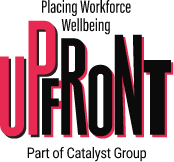Introduction
Factory workers are the backbone of manufacturing industries, contributing significantly to economic growth. However, their productivity is often hindered by poor working conditions, limited healthcare access, and lack of well-being initiatives. Investing in affordable healthcare for factory workers in India, strengthening factory workforce ecosystems, and implementing strategies for improving factory worker productivity can create healthier and more productive workplaces.
The Role of Factory Workers in Industrial Growth
Factory workers play a pivotal role in driving industrial success through:
- Production Efficiency
- Ensuring timely manufacturing and delivery of goods.
- Skill-Based Contributions
- Leveraging specialized skills in assembly, maintenance, and quality control.
- Economic Impact
- Supporting the supply chain and creating ancillary job opportunities.
Despite their importance, factory workers often face challenges that hinder their productivity and well-being.
Challenges Faced by Factory Workers
- Health Risks
- Exposure to hazardous materials, noise pollution, and repetitive stress injuries.
- Limited Healthcare Access
- Inadequate access to medical facilities and preventive care, especially in rural and semi-urban areas.
- Unsafe Working Conditions
- Insufficient safety measures, such as lack of protective gear or emergency protocols.
- Low Morale
- Poor work-life balance, lack of recognition, and limited growth opportunities.
Addressing these challenges is crucial for fostering a resilient and productive workforce.
Affordable Healthcare for Factory Workers in India
Ensuring affordable healthcare for factory workers in India is a fundamental step in improving their quality of life. Key initiatives include:
- On-Site Clinics
- Establishing medical facilities within factory premises for routine check-ups and emergency care.
- Health Insurance Schemes
- Partnering with insurance providers to offer affordable health coverage tailored to factory workers’ needs.
- Preventive Healthcare Programs
- Conducting regular health screenings, vaccination drives, and wellness workshops.
- Telemedicine Services
- Providing remote consultations to workers in remote locations, reducing the need for travel.
These measures ensure workers remain healthy and focused, boosting overall productivity.
Strengthening Factory Workforce Ecosystems
A robust factory workforce ecosystem integrates health, safety, and well-being into the workplace culture. Key strategies include:
- Workplace Safety Initiatives
- Implementing rigorous safety protocols, providing training on hazard management, and conducting regular audits.
- Nutrition Programs
- Offering subsidized, nutritious meals to improve workers’ physical health and energy levels.
- Mental Health Support
- Establishing employee assistance programs (EAPs) to address stress, anxiety, and burnout.
- Community Engagement
- Encouraging worker participation in community-building activities and skill-sharing events.
By strengthening these ecosystems, factories can foster a supportive and sustainable environment for their workforce.
Strategies for Improving Factory Worker Productivity
Improving factory worker productivity requires a multi-faceted approach that addresses both individual and systemic factors:
- Skill Development
- Providing training programs to enhance technical and soft skills, increasing efficiency and adaptability.
- Recognition and Incentives
- Implementing reward systems to acknowledge exceptional performance and encourage motivation.
- Flexible Work Arrangements
- Offering shifts that accommodate workers’ personal needs, reducing absenteeism and fatigue.
- Technological Integration
- Adopting tools such as automation and wearable tech to optimize workflows and reduce manual strain.
These strategies empower workers to perform at their best, contributing to the factory’s success.
Measuring the Impact of Health and Well-Being Investments
The effectiveness of health and well-being initiatives can be assessed through key performance indicators (KPIs):
- Reduction in Absenteeism
- Monitoring the decrease in sick leaves and unplanned absences.
- Increase in Output
- Evaluating productivity improvements through higher production rates and lower error margins.
- Employee Retention
- Tracking reduced turnover rates and improved job satisfaction.
- Cost Savings
- Calculating reductions in medical expenses, workplace accidents, and operational inefficiencies.
Regular evaluations ensure that initiatives remain impactful and aligned with workers’ needs.
Overcoming Challenges in Implementation
Implementing health and well-being programs often encounters challenges such as:
- Budget Constraints
- Addressing costs through partnerships with NGOs, government schemes, and corporate sponsors.
- Resistance to Change
- Overcoming reluctance by involving workers in the planning process and demonstrating tangible benefits.
- Scalability Issues
- Ensuring that programs can be effectively scaled to benefit large and diverse workforces.
Collaborative efforts and strategic planning are essential to overcoming these barriers.
Future Trends in Workforce Well-Being
The future of factory workforce management will be shaped by emerging trends, including:
- Wearable Health Technologies
- Using devices to monitor workers’ health in real time and alert them to potential risks.
- AI-Powered Workflows
- Enhancing efficiency and safety through predictive analytics and automation.
- Sustainable Practices
- Reducing environmental impact through green manufacturing processes and eco-friendly infrastructure.
- Comprehensive Well-Being Programs
- Expanding beyond physical health to include financial literacy, mental health, and career development.
By embracing these trends, factories can ensure the long-term health and productivity of their workforce.
Conclusion
Investing in the health and well-being of factory workers is a win-win strategy for businesses and employees alike. By prioritizing affordable healthcare for factory workers in India, strengthening factory workforce ecosystems, and implementing strategies for improving factory worker productivity, organizations can foster a healthier, happier, and more efficient workforce. These initiatives not only drive economic growth but also create a more equitable and sustainable industrial landscape.


